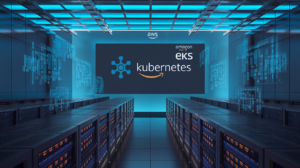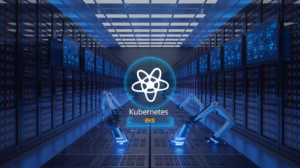You’re staring at the AWS console, trying to decide between NLB and ALB, and that subtle feeling of dread creeps in. “Pick the wrong one, and the entire architecture might collapse under load.” Sound familiar?
Every DevOps engineer and cloud architect has been there. The load balancer decision seems simple until you realize it’s the linchpin of your entire application’s reliability.
When choosing between Network Load Balancer (NLB) and Application Load Balancer (ALB) on AWS, the stakes are higher than most realize. One handles millions of requests per second at ultra-low latency, while the other inspects application-layer traffic with sophisticated routing rules.
But here’s what nobody tells you about this choice – the “better” option isn’t about performance specs at all…
Understanding AWS Load Balancers
The Core Function of Load Balancers in AWS
Ever tried to funnel thousands of visitors through a single server? Spoiler alert: it crashes. That’s where AWS load balancers come in—they’re the traffic cops of your architecture.
Load balancers distribute incoming application traffic across multiple targets—like EC2 instances, containers, and IP addresses—in multiple Availability Zones. This does two critical things: improves application availability and handles traffic spikes without breaking a sweat.
But they don’t just route traffic. They’re constantly performing health checks, making sure requests only go to healthy targets. When a server starts acting up, the load balancer notices and stops sending it traffic. Pretty smart, right?
Evolution of AWS Load Balancing Services
AWS didn’t stop at basic load balancing. Their services have evolved dramatically:
- Classic Load Balancer (CLB): The original. Simple but limited.
- Application Load Balancer (ALB): The HTTP/HTTPS expert. Understands applications.
- Network Load Balancer (NLB): The speed demon. Handles millions of requests per second.
Each generation addresses different needs in the AWS ecosystem. What started as basic traffic distribution has transformed into sophisticated services with content-based routing, TLS termination, and WebSocket support.
Key Load Balancer Metrics to Track
Don’t fly blind with your load balancers. These metrics will tell you if things are healthy or heading south:
- HealthyHostCount/UnhealthyHostCount: How many of your targets are actually working?
- RequestCount: The volume of requests hitting your load balancer
- TargetResponseTime: How fast your application is responding
- HTTPCode_ELB_4XX/5XX: Client and server errors that need attention
- ActiveConnectionCount: Number of concurrent connections
Monitoring these metrics through CloudWatch gives you the power to spot problems before your users do.
Network Load Balancer (NLB) Deep Dive
How NLB Handles Traffic at the Transport Layer
Network Load Balancer operates at layer 4 (transport layer), which means it routes traffic based on IP protocol data, TCP/UDP ports, and IP addresses. Unlike ALB, it doesn’t inspect the actual content of your packets—it just forwards them.
What’s cool about this? Lightning-fast performance. NLB can process millions of requests per second with ultra-low latency (often just microseconds). It maintains a direct connection between client and server using the same connection for the duration of a session.
Your clients connect directly to your backend instances through the NLB, preserving source IP addresses. This gives your applications visibility into who’s actually connecting, which can be crucial for security and analytics.
NLB Performance Characteristics and Limits
NLB crushes performance metrics:
- Handles millions of requests per second
- Maintains consistent performance under sudden traffic spikes
- Processes connections with latency measured in microseconds
- Supports TCP, UDP, and TLS protocols
The limits are seriously impressive:
- Can handle 55,000+ connections per second per zone
- Supports millions of simultaneous connections
- Manages static and elastic IP addressing across zones
- Automatically scales without pre-warming (unlike Classic Load Balancers)
Static IP Addresses and Zonal Isolation Benefits
One major advantage of NLB is static IP support. You get:
- One static IP address per zone
- Predictable endpoints for firewall rules and whitelisting
- Easier compliance for regulated industries
Zonal isolation is another key benefit. If one AWS zone fails, your NLB instances in other zones keep operating independently, providing true high availability without cross-zone failures.
Ideal Use Cases for NLB Implementation
NLB shines brightest for:
- IoT applications requiring persistent connections
- Gaming servers needing ultra-low latency
- Financial trading platforms where microseconds matter
- VPN endpoints and proxies requiring fixed IPs
- TCP/UDP traffic that doesn’t need HTTP inspection
- Applications handling millions of connections simultaneously
- Scenarios requiring preservation of client IP addresses
Application Load Balancer (ALB) Explained
Content-Based Routing Capabilities
When you need smarter request handling, ALB is your go-to load balancer. Unlike its NLB cousin, ALB actually examines your HTTP traffic and makes routing decisions based on what’s inside.
You can route traffic based on:
- URL paths (/images, /api, /users)
- HTTP headers
- Query parameters
- Source IP addresses
- Host-based routing for multiple domains
This is perfect when you’ve got microservices or containerized apps where different services handle different parts of your application.
HTTP/HTTPS Protocol Support Advantages
ALB works at the application layer (Layer 7), giving you capabilities that NLB just can’t match. It natively handles HTTP/HTTPS traffic and manages all the SSL/TLS termination for you.
The real magic? You can centralize your SSL certificates at the ALB level instead of managing them on each backend server. This slashes your management overhead and keeps your architecture cleaner.
Advanced Request Routing and Listener Rules
ALB shines with its rule-based routing system. You set up listeners with rules that determine how requests get routed.
Rules follow an if/then pattern:
IF request matches [condition]
THEN forward to [target group]
You can stack multiple conditions and create priority-based rule chains. This means you could route mobile users to optimized servers or premium customers to high-performance instances.
WebSocket and HTTP/2 Support
Modern web apps need real-time communication, and ALB delivers with full WebSocket support. Your chat applications, live dashboards, and gaming platforms can maintain persistent connections without the headaches.
ALB also supports HTTP/2, bringing faster page loads through:
- Header compression
- Multiplexing (multiple requests over one connection)
- Server push capabilities
Container Integration Features
AWS container services and ALB work together like best friends. ALB integrates seamlessly with:
- Amazon ECS
- Amazon EKS
- AWS Fargate
The dynamic port mapping feature is a game-changer for containerized apps. As containers spin up and down, ALB automatically detects the ports and adjusts routing accordingly.
Path-based routing makes ALB perfect for container deployments where different services handle different API endpoints.
Critical Comparison: NLB vs ALB
Performance and Latency Differences
NLB crushes ALB in latency-sensitive applications. We’re talking microsecond processing times versus millisecond-level latency with ALB. That difference matters for real-time applications like gaming, trading platforms, or IoT systems.
ALB’s additional processing layer (where all that smart routing happens) introduces slight performance overhead. But unless every microsecond counts, you probably won’t notice.
NLB simply forwards packets without inspecting them deeply – making it lightning fast but less feature-rich. It’s like choosing between a sports car (NLB) and an SUV with all the fancy features (ALB).
Protocol Support and Feature Set
| Feature | NLB | ALB |
|---|---|---|
| TCP/UDP/TLS | ✓ | TCP only |
| HTTP/HTTPS | Limited | ✓ |
| WebSockets | ✓ | ✓ |
| Path-based routing | ✗ | ✓ |
| Host-based routing | ✗ | ✓ |
| HTTP header routing | ✗ | ✓ |
ALB dominates in application-layer features. It can peek inside HTTP requests and route traffic based on paths, headers, or query strings – perfect for microservices architectures.
NLB handles what ALB can’t – UDP traffic and static IP addresses. Need to support gaming protocols or VoIP? NLB is your only option.
Pricing Structure Comparison
The pricing gap between these two can be significant. ALB costs roughly 25% more per hour than NLB, but that’s not the whole story.
ALB charges based on:
- Hourly rate
- LCU (Load Balancer Capacity Units)
NLB charges based on:
- Hourly rate
- Per-connection fee
High-volume, short-lived connections favor ALB, while stable, long-running connections often make NLB more cost-effective.
Scalability and Availability Guarantees
Both load balancers automatically scale with your traffic needs, but they handle it differently.
NLB is built to handle sudden, massive traffic spikes. It can scale from zero to millions of requests per second in seconds flat. For unpredictable workloads with extreme peaks, NLB won’t break a sweat.
ALB scales too, but takes slightly longer to adapt to traffic surges. Both offer the same 99.99% availability SLA and operate across multiple AZs for fault tolerance.
The winner? Depends on your traffic patterns. Massive, unpredictable spikes? NLB. Steadier traffic with complex routing needs? ALB’s your friend.
Decision Framework for Load Balancer Selection
A. Traffic Pattern Analysis Guidelines
Ever wondered why your load balancer chokes during peak hours? It’s all about the traffic patterns. NLB shines with stable, predictable TCP/UDP traffic. Got gaming servers, IoT devices, or media streaming? NLB is your go-to option.
ALB, on the other hand, thrives in the chaos of variable HTTP/HTTPS traffic. If your users are humans clicking around your website or mobile app, ALB’s intelligent request routing will serve you better.
Track these metrics to make your decision:
- Request volume variations throughout the day
- Protocol distribution (HTTP vs TCP/UDP)
- Average connection duration
- Request per second peaks
B. Application Architecture Considerations
Your app architecture practically screams which load balancer it needs. Microservices? Container-based deployments? ALB was built for these modern setups, with path-based routing that directs traffic to the right service.
Running legacy applications or need protocol preservation? NLB won’t mess with your packets. It simply forwards them as-is to your instances.
Scenario: You've got a Kubernetes cluster running multiple microservices
Solution: ALB with target groups for each service, using path-based routing
C. Cost Optimization Strategies
Nobody wants to bleed money unnecessarily. ALB costs more but handles application-layer tasks that would otherwise require extra compute resources. NLB is cheaper per hour but might push complexity (and costs) to your application servers.
Here’s the real deal: ALB typically costs 25% more than NLB, but could save you 40% in compute costs if your application would otherwise handle routing logic.
For dev/test environments, consider NLB to keep costs down while maintaining similar architecture to production.
D. Future Growth and Scaling Requirements
The load balancer you choose today needs to handle tomorrow’s traffic too. ALB scales automatically with your traffic and supports advanced traffic shaping—perfect if you’re expecting rapid growth or plan to implement blue/green deployments.
NLB is the speed demon, maintaining ultra-low latency even as connections multiply. If your future includes high-throughput streaming or real-time applications, NLB won’t become your bottleneck.
Ask yourself: Will your application grow horizontally (more services) or vertically (more traffic to existing services)?
E. Regulatory and Compliance Factors
Some industries don’t give you much choice. Financial services and healthcare often require end-to-end encryption or specific security compliance.
NLB supports preserving client IP addresses and works with AWS PrivateLink—crucial for regulated environments. ALB offers more granular security controls but terminates SSL connections.
For PCI DSS or HIPAA compliance, document your load balancer choice as part of your security architecture. The decision could make or break your compliance audit.
Implementation Best Practices
Security Configuration Essentials
Getting security right with your AWS load balancers isn’t optional – it’s do or die. Start with these non-negotiables:
For ALB:
- Enable HTTPS with up-to-date TLS (1.2 or higher)
- Implement a Web Application Firewall (WAF) to block common attacks
- Set security groups to allow only necessary traffic
- Use AWS Certificate Manager for free, auto-renewed SSL certs
For NLB:
- Configure TLS for encrypted traffic
- Implement strict security groups at the target level
- Use VPC endpoint policies to control access
Don’t make the rookie mistake of using default configurations. Your security posture needs to match your specific workload requirements.
Monitoring and Logging Setup
You can’t fix what you can’t see. Set up these monitoring essentials:
CloudWatch Metrics to Watch:
- RequestCount
- TargetResponseTime
- HTTPCode_ELB_5XX_Count
- HealthyHostCount
For both NLB and ALB, enable access logs to S3 with lifecycle policies. This isn’t just busywork – these logs are gold when troubleshooting issues.
Create CloudWatch dashboards that show your load balancer health at a glance, and set up alarms for critical thresholds. The difference between a minor hiccup and a major outage often comes down to how quickly you spot problems.
High Availability Design Patterns
The whole point of using AWS load balancers is high availability, so don’t botch the implementation:
- Deploy your load balancer across multiple Availability Zones (minimum of two)
- For ALB, configure cross-zone load balancing for even distribution
- With NLB, decide deliberately whether to enable cross-zone balancing based on your latency requirements
- Implement sticky sessions on ALB only when absolutely necessary – they reduce your fault tolerance
Remember that every single-point-of-failure in your architecture is a ticking time bomb. Your load balancer setup should survive an entire AZ going dark without customer impact.
Disaster Recovery Strategies
Even the best HA setup needs a solid DR plan. Here’s what works:
- Multi-region failover: Create identical load balancer setups in secondary regions
- For ALB-based architectures, consider Route 53 health checks with failover routing
- With NLB setups, Global Accelerator provides cross-region failover with static IP addresses
- Automate your DR testing – manual testing rarely catches everything
Document and practice your failover procedures. The worst time to figure out your DR process is during an actual disaster.
When implementing failover between NLB and ALB, understand their fundamental differences in handling connections. NLB preserves client IP addresses while ALB doesn’t by default – this can break applications if not properly accounted for in your DR planning.
Choosing the right load balancer for your AWS architecture requires understanding the distinct capabilities of both NLB and ALB. Network Load Balancers excel in high-performance scenarios requiring TCP/UDP traffic handling, static IP addresses, and ultra-low latency. Application Load Balancers provide superior application-layer features, content-based routing, and integration with other AWS services, making them ideal for web applications with complex routing needs.
Ultimately, your architectural requirements should guide your decision. For applications demanding maximum throughput and consistent performance, NLB may be your best choice. If your architecture requires advanced request routing, authentication features, or extensive monitoring capabilities, ALB offers the flexibility you need. Whichever you choose, following implementation best practices will ensure your load balancer becomes a reliable and optimized component of your AWS infrastructure.



















